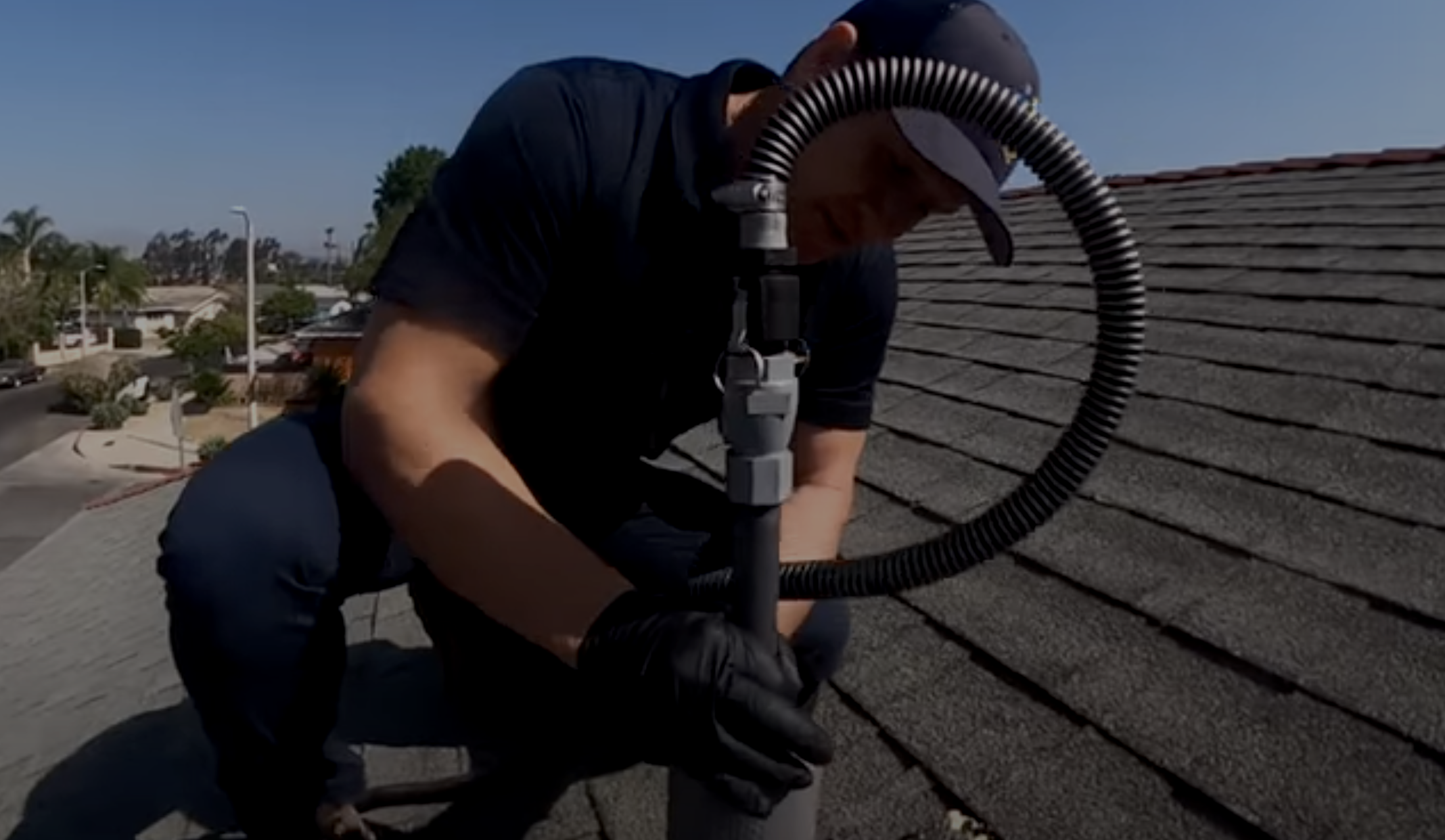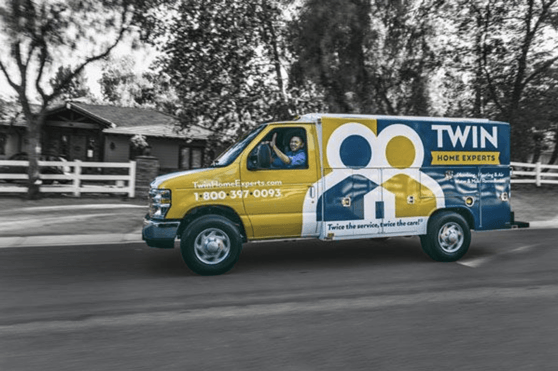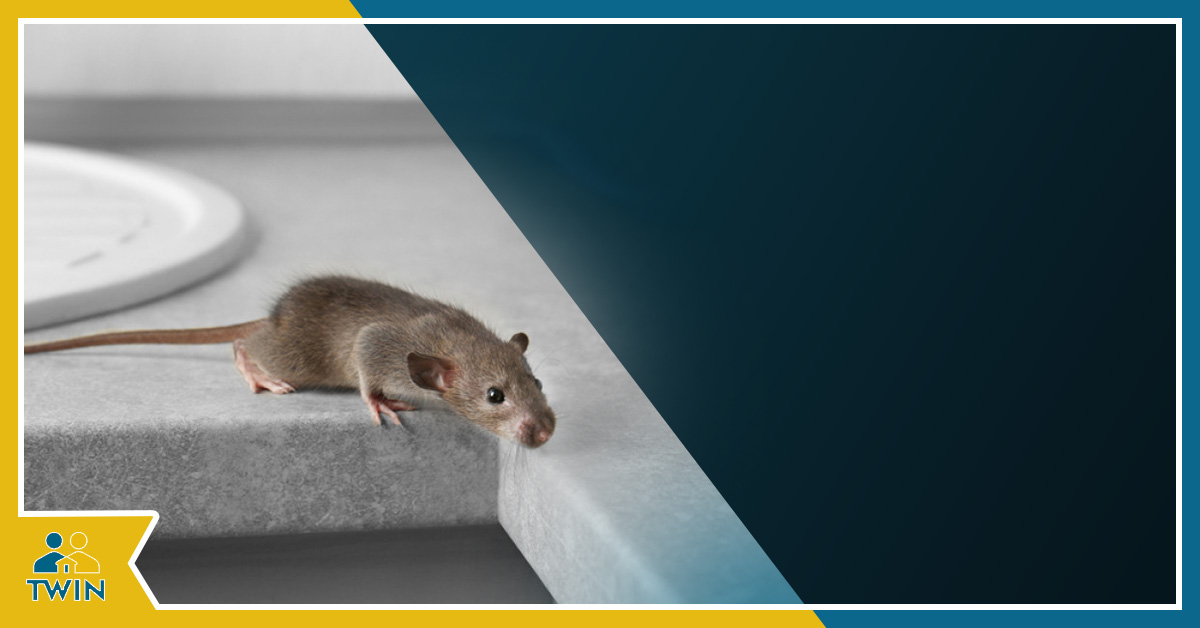Need Toilet Repair?
One of the worst plumbing disasters that a home can face is a gross, overflowing toilet. Sometimes you can fix the issue yourself, like Dave demonstrated here in this video:
But sometimes, the problem is more severe. The toilet is spewing waste-water, and you can’t get it to stop! This is more than just a common clog — this is sewer backflow , and it requires special attention from a plumber.
The Twin Plumbers were recently called upon to help a homeowner that had just this problem. They had placed towels on the floor to help contain the dirty water from migrating further into other parts of the home. For the record, this is the first and best course of action for you to take if your toilet overflows…but it doesn’t end there. To truly fix your problem, you’re going to need professional toilet repair.
Water intrusion in your living space can be bad enough — we have seen it weaken wood, corrode metals, ruin carpets and trigger mold growth — but when that water is highly unsanitary, such as toilet water, the risks increase and the potential damage to your home can be even greater. It’s important to remember that sewage and waste-water carry dangerous pathogens, so having a sewer back-up is a first and forement a safety issue.
If you’re experiencing toilet water damage in your bathroom, then we highly recommend locating a company that can provide a full toilet overflow cleanup and restoration services to help you get your home or building back to its pre-flooded state. The use of a water meter is the first step in determining how far the water has migrated. Often times, water sneaks behind the baseboards, which the naked eye cannot see. This is where mold and bacteria begin to form if it the areas are not treated properly.
Once it has been determined where the water has spread to, remove materials that have been affected in preparation of dry down. Proper equipment, like air scrubbers and dehumidifiers, are essential to performing the right remediation process. Another essential process is that of applying anti-microbial and anti-bacterial formulas to fully sanitize all areas.
How Toilet Overflows Happen
Water can overflow from a toilet for a variety of reasons. However, the two most common causes will be clogs and malfunctioning toilet tank parts.
A clog happens when the line that leads waste from the bowl to the sewers is blocked off by solid objects or some other clogging mass. This can include flushed toilet paper, accumulated hair, feminine pads, toys, and even a mobile phone! We’ve seen that one ourselves! These objects make water passage difficult, causing both water and waste to backflow. When this happens and water from your tank doesn’t stop flowing to the bowl, sewer water (a.k.a. “black water”) spills over and eventually floods surrounding spaces.
A malfunctioning water tank can cause similar flooding with water that is usually less contaminated. Toilet tanks are designed to stop filling the tank and bowl with water when a designated volume is reached. If a part of the tank’s internal mechanism is broken, water can flow continuously. This can cause the tank bowl to overflow and, subsequently, will allow water to spill out. When water only overflows from the tank and not the bowl, the overflow water would be classified as “gray water.”
The Dangers of Toilet Overflow
An overflowing toilet presents a myriad of dangers to your property and the people inside of it. Since this water is moderately to highly contaminated, it’s very important that you contact an expert to deal with whatever issues you are having right away.
Here are the risks that you could be running into if you don’t apply toilet overflow cleanup and restoration services promptly:
- Damage to permanent parts of your structure. When contaminated water seeps into places that are supposed to stay dry, it can cause significant damage to wood and metal parts of a building.
- Wood that is constantly damp can attract pests, become brittle, and also form cracks or flake off. It can also absorb and retain the odor of contaminated water. Metals, on the other hand, are susceptible to corrosion. With contaminated water, the rusting process tends to go faster. This weakens iron components of your structure and affects its overall stability.
- Mold growth is the most common problem we come across. Harmful fungi love to grow on damp surfaces, where organic matter can sustain it. Water-flooded property satisfies these simple conditions, allowing mold to form colonies on drywall, wallpaper, wood and other surfaces. Mold and its spores have been associated with skin and respiratory irritation. In worst case scenarios, mold can produce mycotoxins that can cause neurological disorders.
- Having contaminated floodwater find its way into places where clean water is stored can result in very serious health consequences. Bacteria can make people very ill, and even when they’re not ingested, microbes can cause skin diseases.
- Carpets and rugs are not meant to be under heavy water exposure, never mind unsanitary water. We always recommend discarding contents that have been affected by gray water.
When it comes to homeowner’s insurance coverage for overflowing toilet damage, make sure that you document all of the contents that have been destroyed. The good news from all of this is that, more than likely, you will have full coverage from the damage.
At the Twin Plumbers, we love to educate our customers about everything we know in the plumbing trade. If you have any questions, please feel free to contact us. As always, we want to thank you for reading our blog post today!
The post Toilet Repair: Water Damage from Overflowing Toilet in Los Angeles appeared first on Twin Home Experts.







